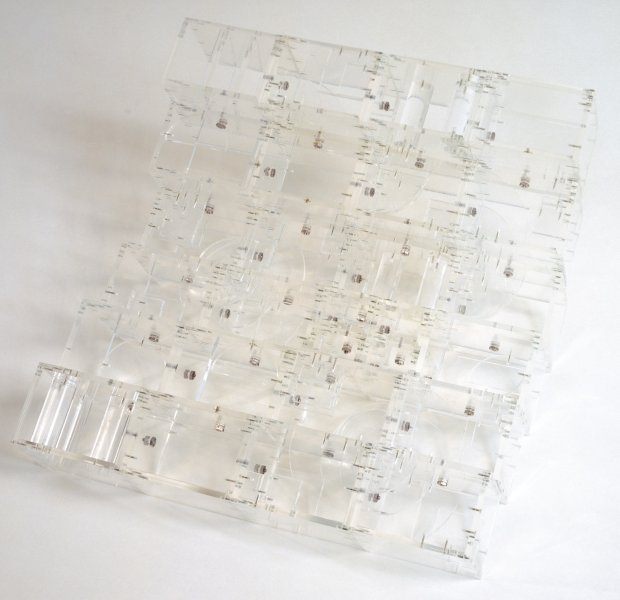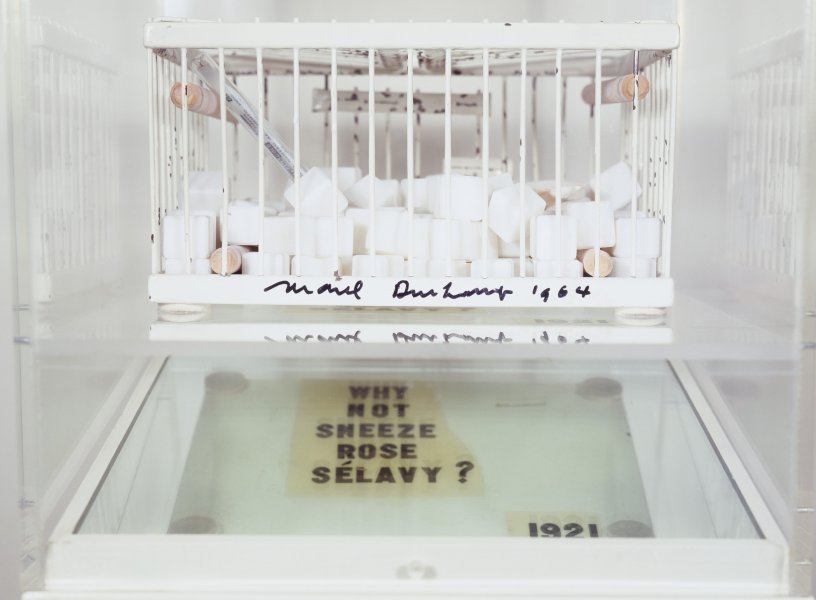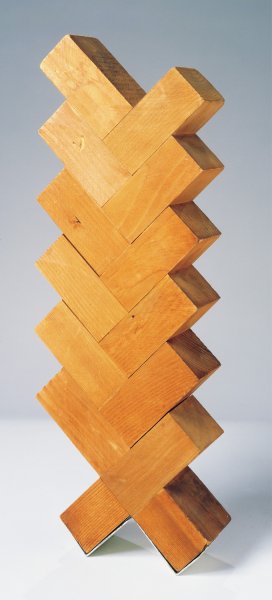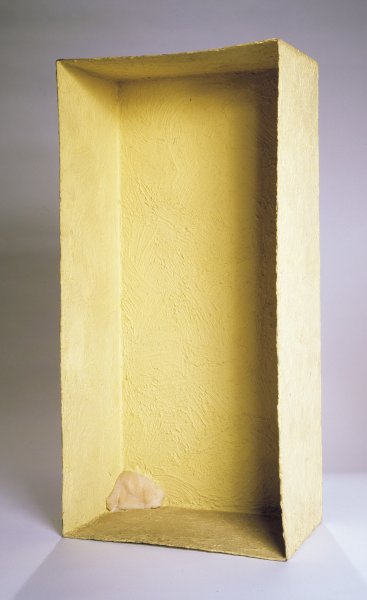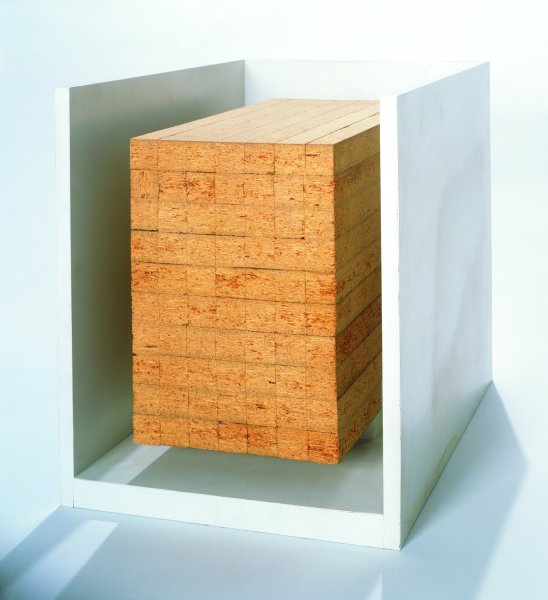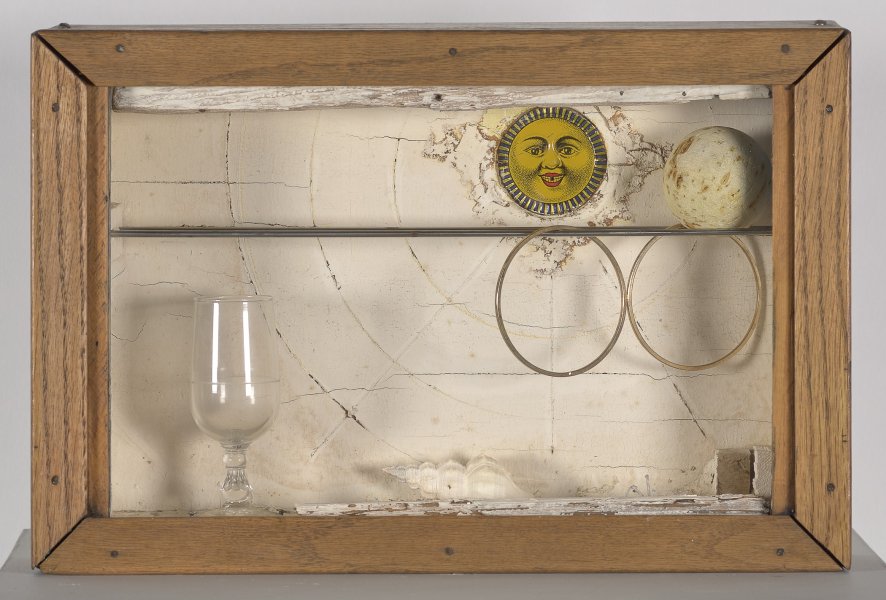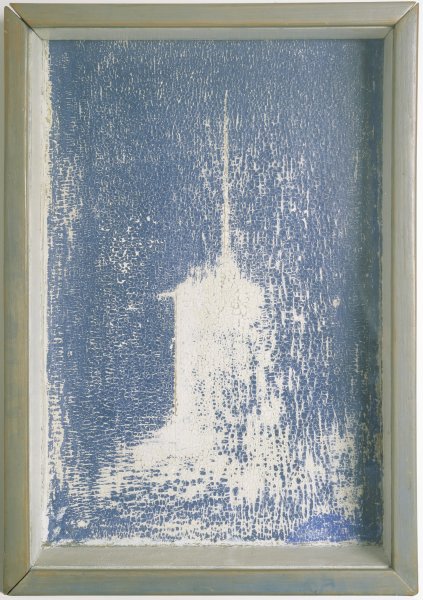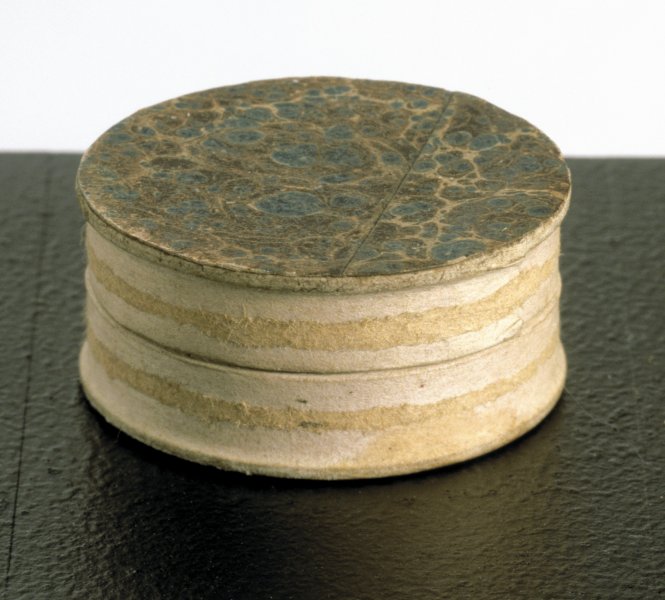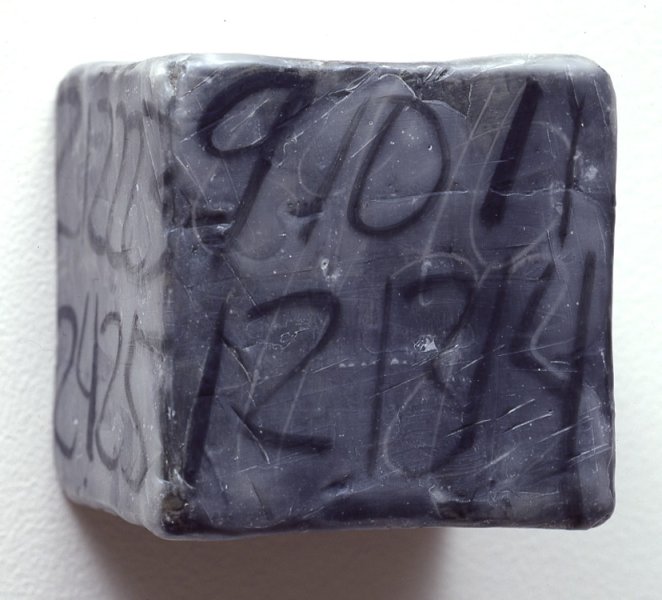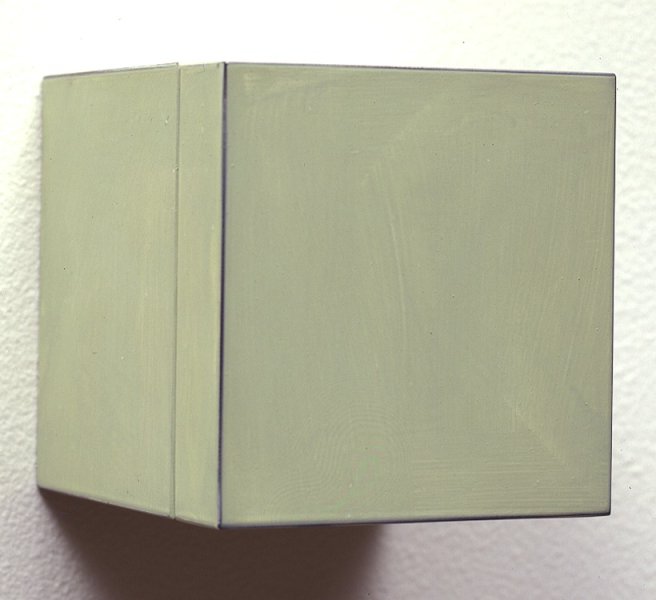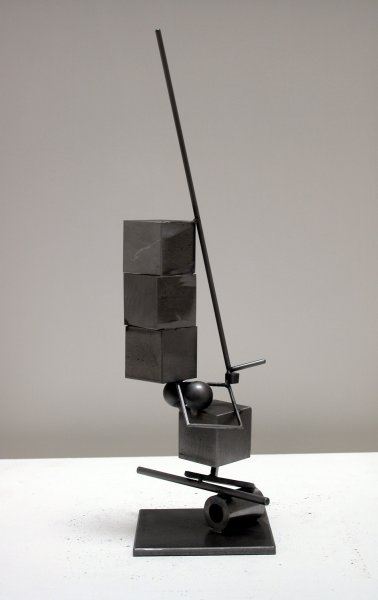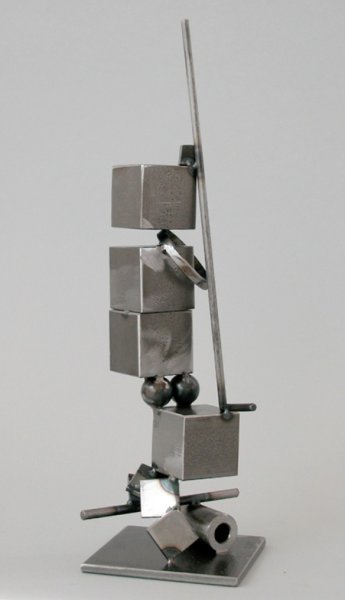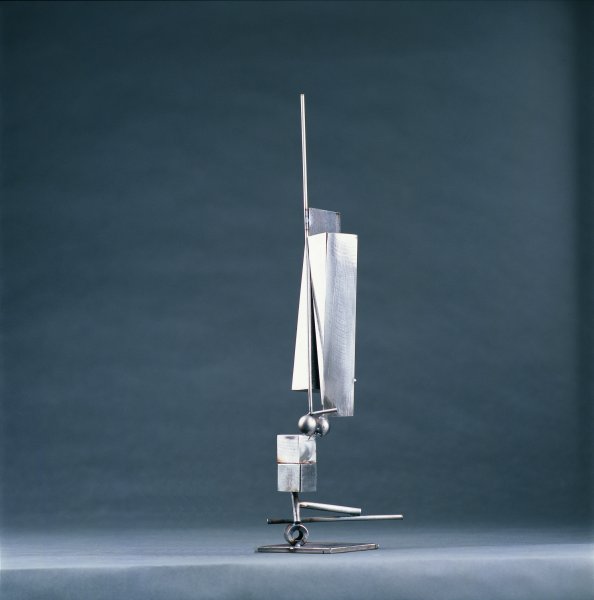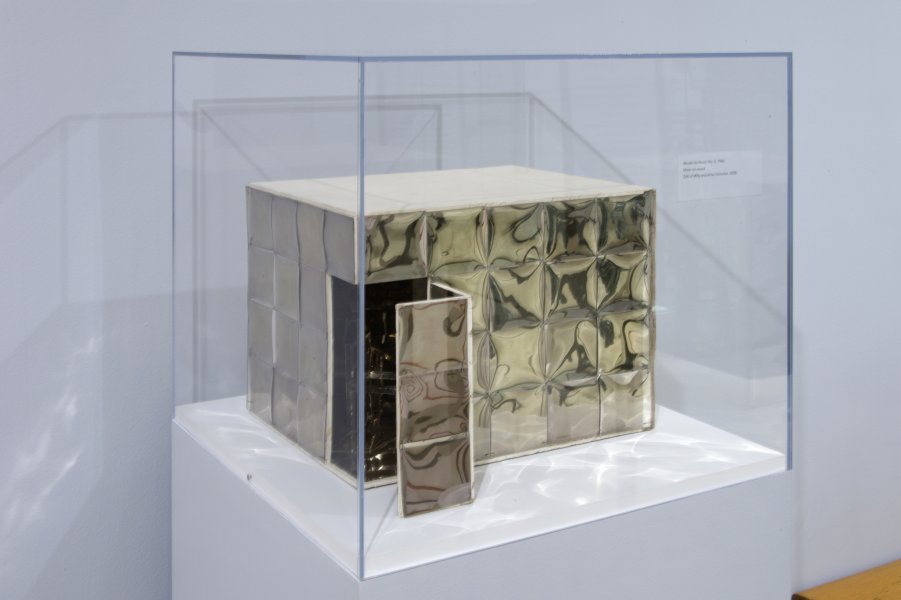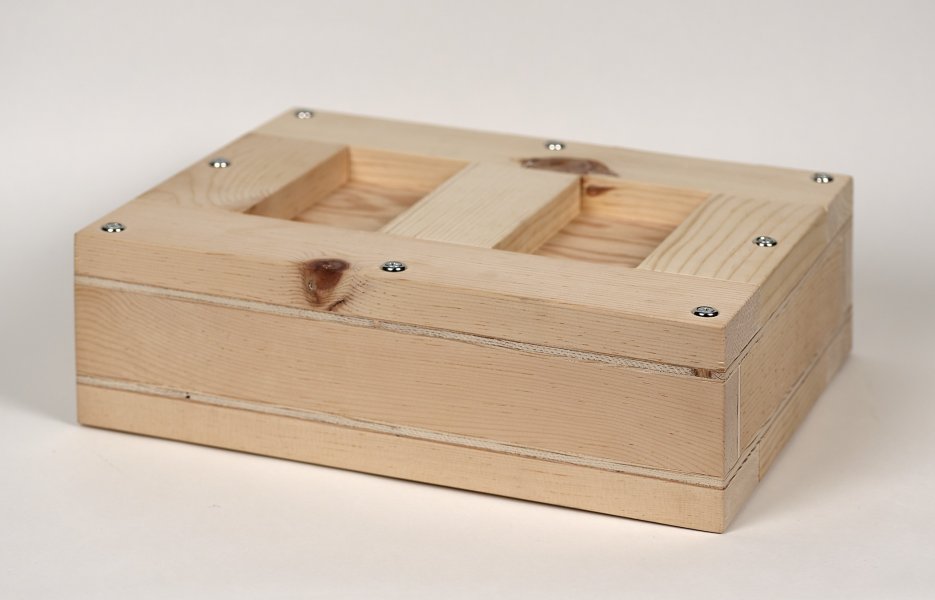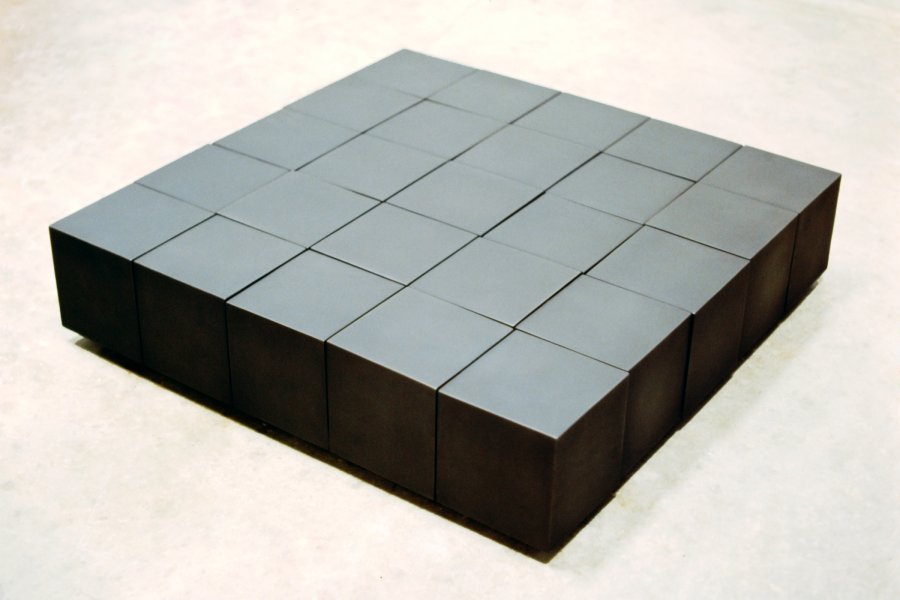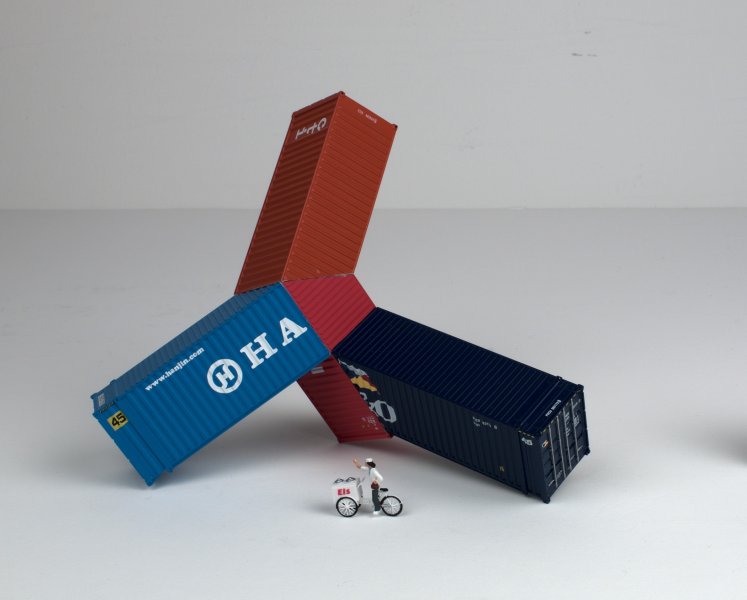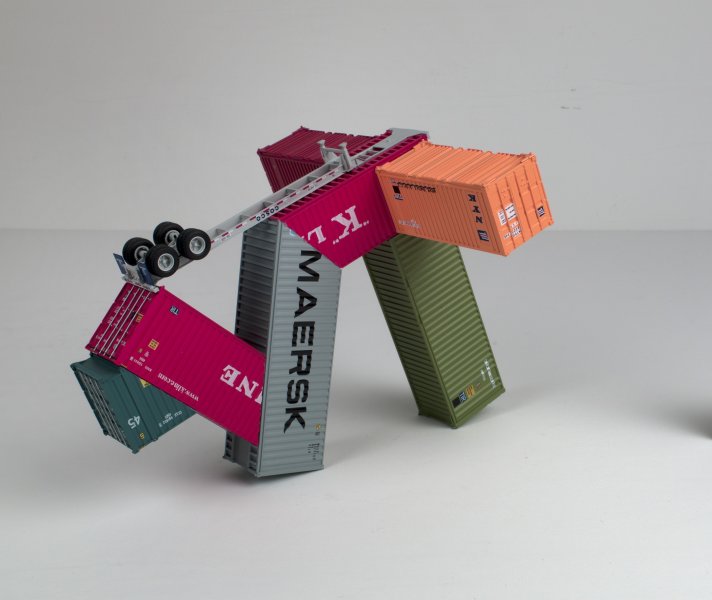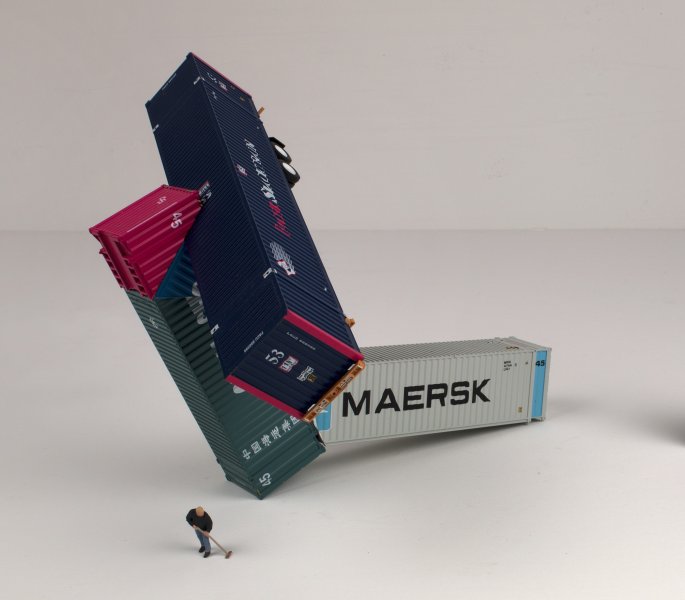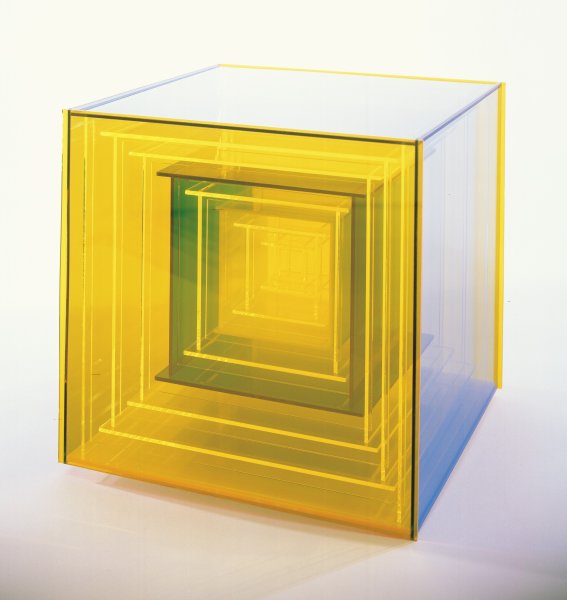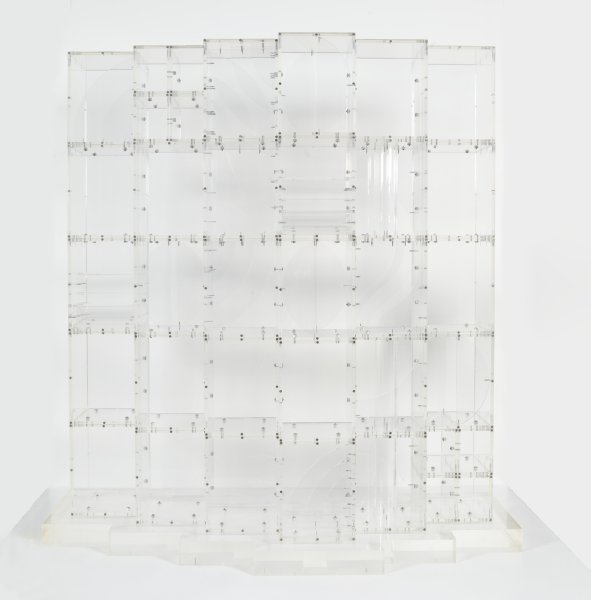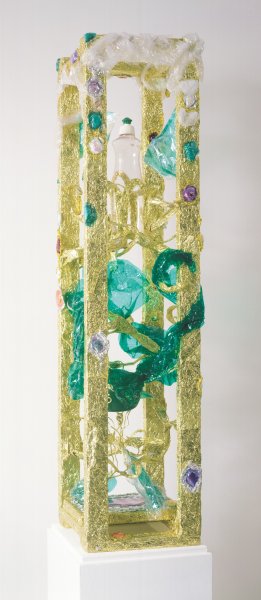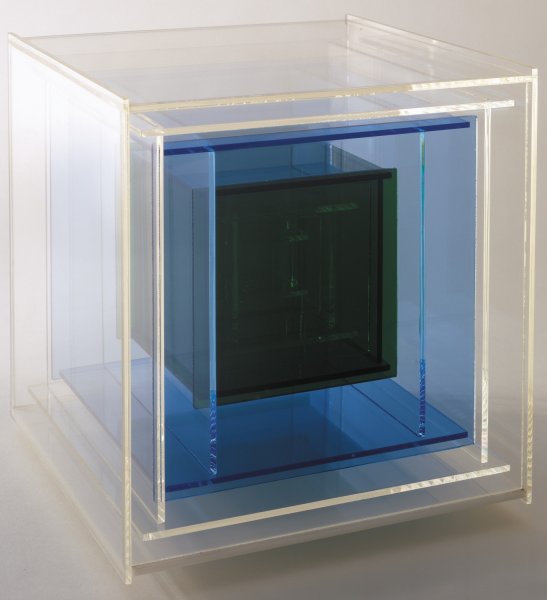Cubes and Rectangles, Boxes and Containers
Friday, August 16, 2013–Sunday, April 20, 2014
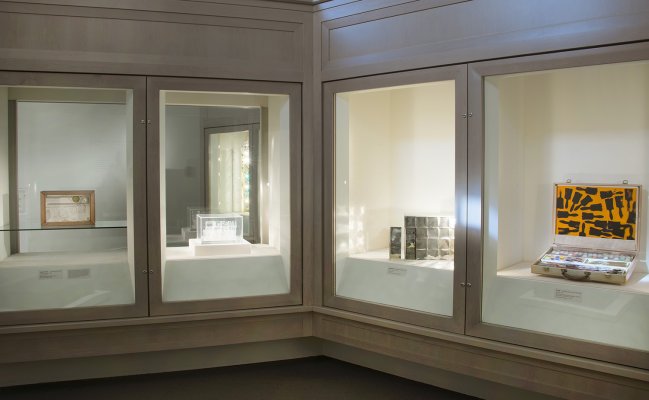
Installation view of Cubes and Rectangles, Boxes and Containers. Photograph by Tom Loonan.
Gallery for Small Sculpture
Cubes and rectangles can be some of the quietest forms in art—simple in shape, with no inherent meaning, resting steady and peacefully on any flat surface. Artists often select shapes like these to guide our focus to other aspects of their work, including the materials, the creation process, or elements such as color, light, and space. For example, Leroy Lamis explores the effects of light in his plastic cubes; in Model One for 1968 Space Box, Julius Tobias focuses on ideas of space and shadow; and Eric Tillinghast’s Not Titled steel work evokes weight and permanency. Cubes and rectangles are not always so calm and peaceful, however; when tilted, they are able to create feelings of motion, imbalance, and energy. The wood rectangles that make up Carl Andre’s Cock create a dynamic yet balanced upward and outward rising form, and Fletcher Benton’s “Blocks on Blocks” series explores numerous asymmetrical combinations of rectilinear shapes.
Boxes and containers are altogether different from their non-referential counterparts; by definition, they contain something. In art the contents may be physical, such as the paint supplies in Arman’s box; psychological, like the sulfur-covered zinc box by Joseph Beuys; or, as in Joseph Cornell’s enigmatic and compelling compositions, both. Other boxes in the exhibition invited a variety of responses: Louise Nevelson draws us in with her mysterious black wooden box and Marcel Duchamp, with his cage box filled with unusual items such as small white cubes, encouraging us to rethink the definition of art itself.
This exhibition was organized by Curator of Education Mariann W. Smith.
